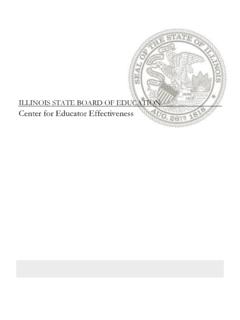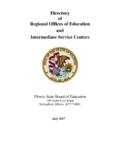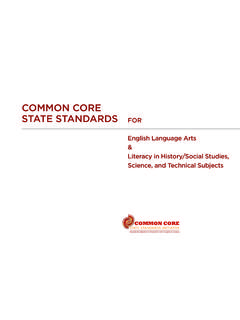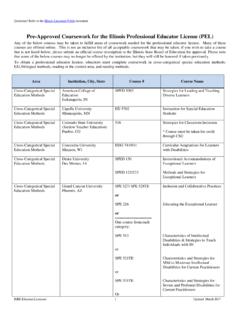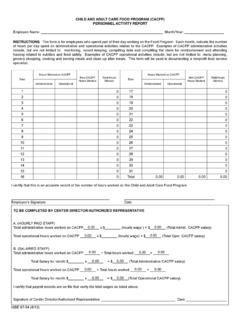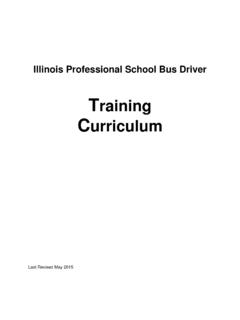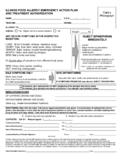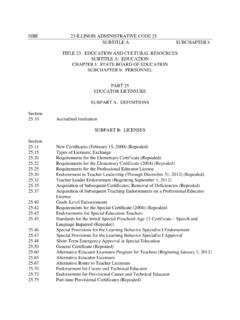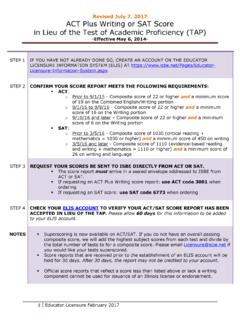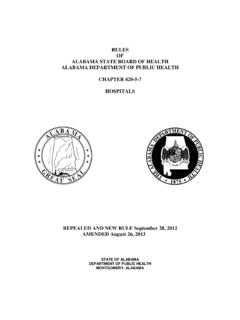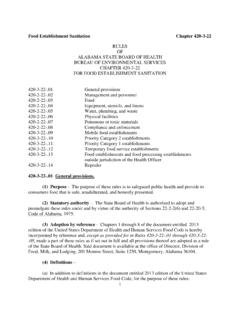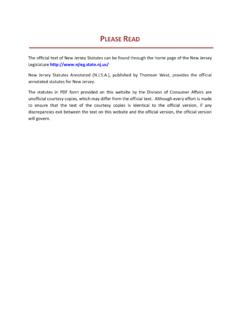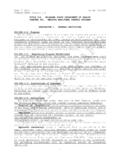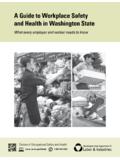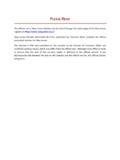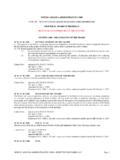Transcription of ISBE 29 ILLINOIS ADMINISTRATIVE CODE 1500 …
1 ISBE 29 ILLINOIS ADMINISTRATIVE CODE 1500 TITLE 29: EMERGENCY SERVICES, DISASTERS, AND CIVIL DEFENSE CHAPTER II: STATE board OF EDUCATION PART 1500 JOINT RULES OF THE OFFICE OF THE STATE FIRE MARSHAL AND THE ILLINOIS STATE board OF EDUCATION: SCHOOL EMERGENCY AND CRISIS RESPONSE PLANS Section Purpose Annual Review of Emergency and Crisis Response Plans Objectives of Drills AUTHORITY: Implementing the School Safety Drill Act [105 ILCS 128] and authorized by Section 40 of the Act [105 ILCS 128/40].
2 SOURCE: Adopted at 30 Ill. Reg. 14355, effective August 18, 2006. ISBE 29 ILLINOIS ADMINISTRATIVE CODE 1500 Section Purpose This Part establishes the requirements for the annual review and updating of the protocols and procedures in each school s emergency and crisis response plan that is required by Section 25 of the School Safety Drill Act [105 ILCS 128/25], including the review of each school s compliance with the school safety drill requirements established in Section 15 of the Act [105 ILCS 128/15].
3 ISBE 29 ILLINOIS ADMINISTRATIVE CODE 1500 Section Annual Review of Emergency and Crisis Response Plans Each annual review shall be conducted by the participants identified in Section 25 of the Act and shall encompass the components of the plan enumerated in this Section. The report submitted pursuant to Section 25 of the Act shall indicate whether each component listed in this Section is present and up to date and shall describe the revisions, if any, that are needed in each. If any component is deemed inapplicable by the review participants, the report shall include the rationale for this determination.
4 A) Concept of Operations 1) The definition and assignment of roles and responsibilities for direction and control, with specific reference to the chain of command, designated back-up for each role, and other critical functions (whether by reliance on the Incident Command System outlined in National Incident Management System of March 1, 2004, published by the Department of Homeland Security and posted at or by implementation of other strategies and methods having the same goals), including: A) responsibilities of individuals who discover an emergency or crisis; B) responsibilities of the leader/commander and other members of the emergency team; C) responsibilities of monitors who will ensure the proper execution of the planned response; D) responsibility for communicating with first responders, building occupants, families, representatives of the media, and other members of the community; E) responsibility for maintaining emergency-related records.
5 2) The description of the responses planned ( , what should happen, when, and at whose direction) to address various emergencies or crises that are known to occur in or affect schools, including at least: A) severe weather; B) fire; ISBE 29 ILLINOIS ADMINISTRATIVE CODE 1500 C) bomb threats or the discovery of suspicious items; D) structural failure; E) the failure of utilities or loss of utility service; F) bus accidents; G) the release of hazardous materials, both indoors and outdoors; H) the presence of an intruder, use of a weapon, or taking of a hostage; I) public health or medical emergencies; J) earthquakes; and K) nuclear power plant accidents (if located within 25 miles of such a plant).
6 3) The inventory of resources that are available when responding to emergencies, including: A) emergency contact lists; B) methods for accounting for the whereabouts and status of all children and the process established for releasing students into the care of their parents and others; C) response guidance material and the method of providing it to students and staff, including support personnel such as bus drivers, secretaries, and custodians; D) emergency supplies and equipment (such as first aid kits, food, water, emergency lighting, fuel, battery-operated radio, and walkie-talkies), maintained for students and staff to use during an emergency or crisis.
7 B) Training and Preparedness 1) The description of actions taken ( , the training provided and the materials used) to ensure that all administrators, staff, and students understand the warning signals and know what to do in an emergency, ISBE 29 ILLINOIS ADMINISTRATIVE CODE 1500 including but not limited to the objectives of the types of school safety drills conducted in conformance with Sections 15 and 20 of the Act. 2) Information that exists about the school, such as hazard analyses, area maps, site plans, safety reference plans (see 23 Ill.
8 Adm. Code ), community agreements, etc. 3) Records and results of the required school safety drills and any optional drills conducted. ISBE 29 ILLINOIS ADMINISTRATIVE CODE 1500 Section Objectives of Drills Each drill conducted pursuant to the Act shall be designed to fulfill the objectives discussed in this Section. a) Notification and Response To ensure that all students, staff members, first responders, and visitors, both inside and outside the school building, are alerted to the fact that an emergency exists; receive adequate instructions on how to proceed, including supplemental instructions from first responders; and respond appropriately to the directions given.
9 (Each drill is to test whether the notification system and those operating it are prepared to provide emergency notification and appropriate direction to everyone on the property, based on the emergency conditions that exist, and whether those present respond accordingly.) b) Movement to Safe Areas 1) When evacuation is called for, to ensure that evacuation of the building and adjacent areas is complete; that alternate exit routes are used if primary routes are obstructed; and that individuals with physical impairments reach safe areas.
10 (Each drill is to test whether and how quickly a building s occupants vacate it in an orderly and safe manner, regardless of any obstructions encountered, and whether staff is prepared to provide assistance effectively to those who are unable to evacuate on their own.) 2) When sheltering in place is called for, to ensure that all the building s occupants reach designated safe areas in a reasonable amount of time. (Each drill is to test whether students are prepared to respond without hesitation to instructions.

